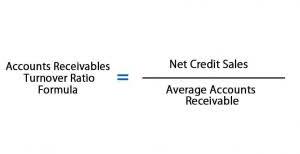
Self-employed taxpayers who performed freelance work, or had a side gig that earned more than $600 in income, may receive a 1099–NEC form. However, non-employee income could also include fees, benefits, commissions, and royalties. Payments to an attorney that exceeded $600 for the tax year must be reported on a 1099-NEC.
Therefore, you must report attorneys’ fees (in box 1 of Form 1099-NEC) or gross proceeds (in box 10 of Form 1099-MISC), as described earlier, to corporations that provide legal services. The term “attorney” includes a law firm or other provider of legal services. Attorneys’ fees of $600 or more paid in the course of your trade or business are reportable in box 1 of Form 1099-NEC, under section 6041A(a)(1). You must also file Form 1099-MISC for each person from whom you have withheld any federal income tax (report in box 4) under the backup withholding rules regardless of the amount of the payment. Learning more about taxes and financial matters is easier than ever. You can always consult Credit.com’s expansive personal finance guide to learn more about topics like unpaid taxes, credit reports, and debt-to-income ratios.
How LLCs are taxed
The phrase “1099 employee” generally describes a person who, in the eyes of the IRS, is an independent contractor, also called self-employed or a freelancer. People who are considered 1099 workers are generally asked what are 1099s for to fill out a W-9 at the start of a new work relationship or contract. In 2020, the IRS reintroduced the 1099-NEC, which companies now use to report money paid to people who did work for them but weren’t employees.
Here’s what to know about the different types of 1099 tax forms, how to confirm you’ve received all your paperwork, and tips for an easier filing season. Reports credit card payments and third-party payment processing received over the internet. You should receive them if you run a business as an online retailer, ecommerce store or other online business. Before tax year 2020, business owners primarily used Form-1099 MISC to report nonemployee compensation. Starting in 2020, the IRS reintroduced the 1099-NEC Form to report nonemployee compensation. This change was made to provide a separate filing deadline for nonemployee compensation.
What are some of the most common types of 1099 Forms?
It may be in the form of a letter showing this information along with commissions, prizes, awards, etc. You should make every effort to ensure that you have the correct type of number reported in the correct format. You may enter an “X” in this box if you were notified by the IRS twice within 3 calendar years that the payee provided an incorrect TIN. If you mark this box, the IRS will not send you any further notices about this account.
- Any cash distribution to the extent it exceeds a Class A Shareholder’s tax basis is taxable as capital gains.
- Additionally, the IRS encourages you to designate an account number for all Forms 1099-S that you file.
- You are required to furnish the payee statements by January 31 and file with the IRS by February 28 (March 31, if filing electronically).
- Not issuing 1099 forms by the deadline can have various consequences for businesses.
For example, if your business hires independent contractors or freelancers who earned at least $600 from you in the past year, you will send 1099s to these individuals to help them report their income. If you have investors or employees who earned dividends from company stock, you may need to issue a Form 1099 to them so that they can report the dividends they have earned to the IRS. You only need to send 1099s to those individuals who have earned income from you that is not reported on a W-2.
What Should You Do with a 1099-C Form?
1099s are essential to keep track of income that isn’t recorded in your wages or salary found in a W-2. Indeed, the Internal Revenue Service (IRS) matches nearly all 1099s and W-2 forms (the wage-report forms from your employer) against your Form 1040 tax returns or other tax forms. 1099-S is one of those types, and it’s used for reporting capital gains on real estate transactions. This form is issued directly by the Social Security Administration whenever you receive any Social Security benefits.
An ownership interest also includes any contractual interest in a sale or exchange of standing timber for a lump-sum payment that is fixed and not contingent. The responsibility of issuing 1099 forms typically falls on businesses or individuals who have made the payments. The recipient of the income, whether it’s an individual or a business, should also receive a copy of the 1099 form. Taxpayers must report any income even if they did not receive their 1099 form. However, taxpayers do not need to send the 1099 form to the IRS when they file their taxes. In other words, the IRS receives the 1099, containing the taxpayer’s Social Security number, from the issuer or payer.
